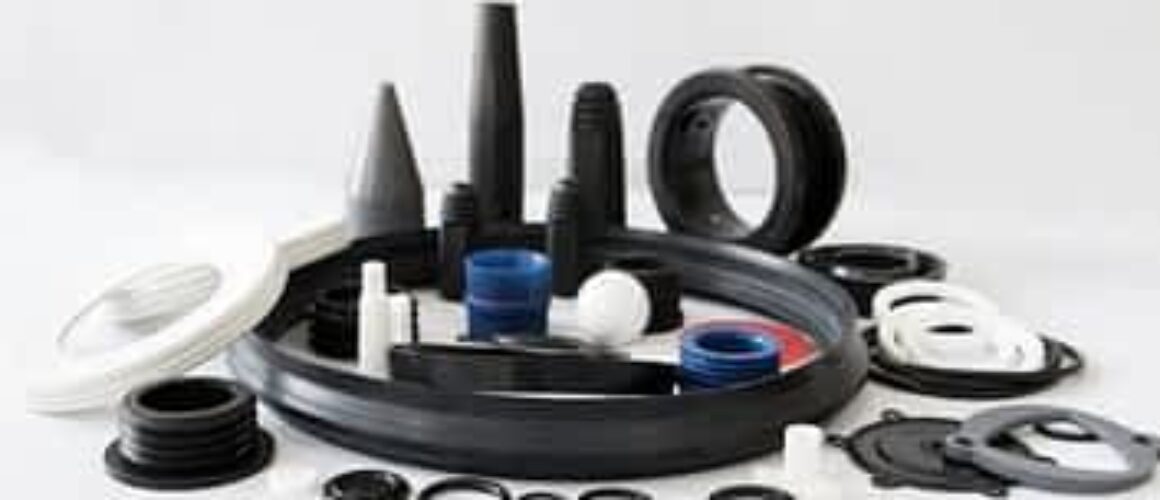How Are Rubber Parts Produced?
Rubber is a polymer which has the ability to stretch and shrink. Rubber has very good properties like strength, long lasting, water resistance & heat resistance. Other benefits like being non-slip, soft, durable & resilient which makes this Rubber Seals the first choice for various Domestic, Industrial & Automotive Applications.
Before knowing the Rubber production process, it would be helpful to know about different types of rubbers and processing of raw rubber which are sent to manufacturing units for product processing.
Basically, there are two types of rubber namely:
- Natural Rubber (NR)
- Synthetic Rubbers –
- Styrene Butadiene Rubber (SBR)
- Nitrile Rubber (NBR, Buna-N)
- Chloroprene (CR)
- Ethylene Propylene Diene Monomer (EPDM)
- Hydrogenated Nitrile Rubber (HNBR)
- Polyacrylic Rubber (ACM)
- Chlorosulfonated Polyethylene (CSM)
- Silicone (VMQ)
- Fluoro-Elastomer (FKM)
Overview of Rubber Products Processing
Rubber is used as a name in 3 categories, which may also be called the main processing stages:
- Raw Rubber – This is the prime raw material for any rubber product which determines the main characteristics of the final product.
- Semi-Manufactured Product – The addition to raw rubber with chemicals and fillers, to impart desirable properties, is termed compounding. The material is however still malleable and plastic.
- Final product – As a result of the vulcanisation process, the rubber compound gets its elastic properties and gives shape to the final product.
There are many types of rubber products such as tyres, mats, moulded products, extruded products, etc. These rubber products have their unique process of manufacturing. However, most of the rubber products are processed with four major steps and are listed below.
- Compounding –It is through compounding that the specific rubber is designed to satisfy a given application in terms of properties, cost, and processability. Rubber is always compounded with additives. Additives include fillers which act either to enhance the rubber’s mechanical properties (reinforcing fillers) or to extend the rubber to reduce cost (non-reinforcing fillers). Chemicals such as Sulphur are added for vulcanization.
- Mixing – The additives must be thoroughly mixed with the base rubber to achieve uniform dispersion of ingredients. If vulcanizing agents were present from the start of mixing, premature vulcanization would result in spoiling the product. To avoid premature vulcanization, a two-stage mixing process is usually deployed by the processing units:
- First Stage Mixing – Carbon Black and other non-vulcanizing additives are combined with the raw rubber. The term Master Batch is used for this first-stage mixture.
- Second Stage Mixing – After Stage 1 Mixing is completed, and time for cooling has been allowed, Vulcanizing Agents are added.
- Shaping –This process helps in providing the shape to the product in the required form. Shaping and related processes for rubber products can be divided into four basic categories:
- Extrusion – The extruder is used to give shape to the rubber compound through the die fixed. The rubber is fed from one end it comes out with the preformed shaped as per the die used. Some of the end product from this process includes hoses, rubber beadings, cables, etc.
- Calendering – Rubber is passed through a series of gaps of decreasing size made by a stand of rotating rolls. Rubber sheet thickness determined by final roll gap. Some of the end products include conveyor belts, bonding gum, etc.
- Coating – This process is used when a Fabric is coated with rubber. The equipment is similar to calendering equipment. Some of the products made by this process are automobile tires, conveyor belts, inflatable rafts, and waterproof cloth tents and rain coats.
- Moulding and casting – Moulded rubber products include rubber mats, gaskets and seals, bush, chappal soles, straps and bottle stops. Also, many foamed rubber parts are produced by moulding. In addition, moulding is an important process in tyre Production as well. There are different types of moulding processes followed. The major types are as follows:
- Compression Moulding
- Transfer Moulding
- Injection Moulding
- Vulcanizing –Vulcanisation is generally a heating process that accomplishes cross-linking of elastomer molecules, so that the rubber becomes stiffer and stronger but retains extensibility. During the vulcanization process, the number of cross-links increases, the polymer becomes stiffer and behaves more and more like a thermosetting plastic (hard rubber).


